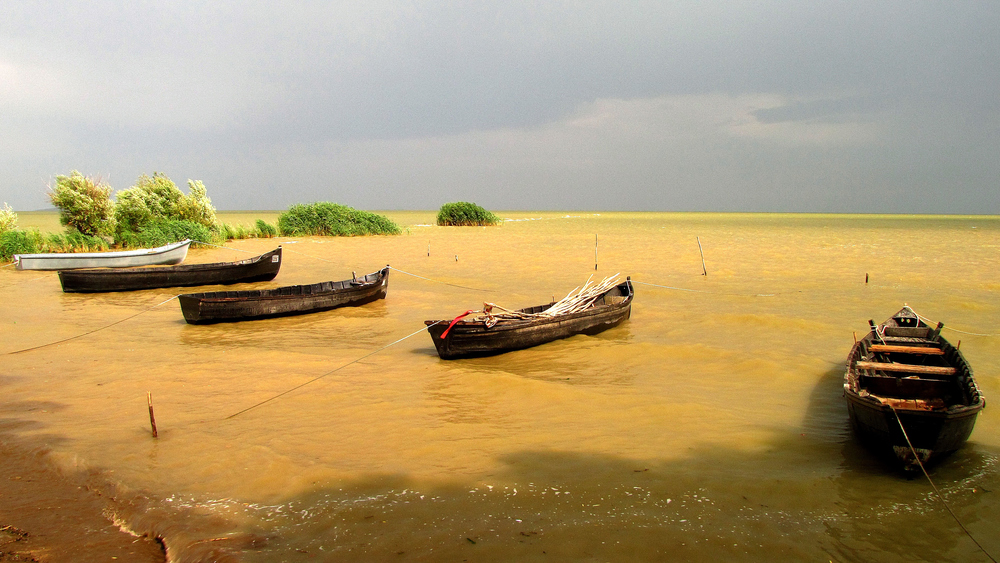Sarichioi și legenda viței de vie
https://povestilemariinegre.ro/sarichioi-si-legenda-vitei-de-vie/
Sarichioi… o localitate tulceană desprinsă parcă din povești. Este satul cel plin de flori al lipovenilor și reședința comunei cu același nume.
În secolul al XVIII-lea, persecutați religios de Petru cel Mare și apoi de Ecaterina a II-a, lipovenii s-au așezat în Dobrogea, cei mai mulți dintre ei, pe malul Razimului (Razelm) acolo unde se puteau îndeletnici cu ce știau mai bine, și anume cu pescuitul.
La Sarichioi ajungi ușor… De la Babadag, renunți la drumul european ce te duce direct la Tulcea și faci dreapta pe o șosea în pantă. Mai întâi ajungi la Enisala, sat al comunei, celebru grație maiestuoasei cetăți medievale ce domină zona din vârful pintenului de stâncă.
Mergi mai departe și în scurt timp poposești în Sarichioi. Numele este turcesc și se traduce prin Satul Galben (sarî koy).
Gazda mea în Sarichioi este Vitali, fiu al satului, plecat însă de ani buni pentru a munci la Tulcea și mai apoi, la București. În grădina unui unchi de al său, ce ne-a primit cu mare drag, primesc un pahar de vin aproape negru, adus de la rece, tocmai bun pentru canicula zilei de vară. Este extraordinar și neașteptat de catifelat.
Vitali mă așteaptă să-mi termin paharul, zâmbește, apoi îmi spune mândru:
Este Negru de Sarichioi, cel mai bun vin de pe pământul ăsta!
Aflu că Negrul de Sarichioi a fost faimos decenii bune dar că vița de vie a fost răpusă de filoxeră și că acum este un soi foarte rar, pe care doar câțiva gospodari îl mai cultivă. Amicul meu mai spune:
– Acum mai bine de 100 de ani, tulcenii și bucureștenii beau Negru de Sarichioi în localurile lor luxoase. Vinul nostru ajungea chiar și la Constantinopole, unde era băut de mari diplomați… Vremurile alea au trecut, dar cine știe, poate că Negrul va fi din nou, odată, la loc de cinste…
Vitali știe că sunt avid de legende și îmi spune: Am vrut să te aduc aici pentru ați spune povestea vinului ăsta miraculos. Așa vei înțelege cum de a ajuns el, aici, în satul de pescari…
***
Iar povestea lui începe pe dată…
Bătrânii Sarichioiului spun așa… Acum mult timp, să fie mai bine de 120 de ani, peste sat și peste Razim s-a abătut o ploaie îngrozitoare, ce a ținut trei zile și trei nopți. Pescarii nu puteau ieși din casă și se gândeau cu groază că furtuna iscată le-a distrus plasele puse și că le-a risipit capturile. În a patra zi însă vremea s-a domolit iar norii s-au oprit din plânsul lor.
Toți pescarii au plecat degrabă. Ultima barcă era cea a bătrânului Sidor, bătrân ataman peste care însă anii se adunaseră puzderie, slăbindu-i vlaga. Sidor nu îl avea cu el decât pe nepotul Ivașca, un țânc de 10 ani, ce abia acum învăța meserie.
Sidor îi boscorodea pe pescarii ce îl lăsaseră ultimul, uitând că bătrânul era cel ce îi învățase meșteșugul. A pornit în cele din urmă, încercând fără succes să îi ajungă din urmă pe ceilalți…
Furtuna s-a pornit din nou spre seară, când toate bărcile se opriseră pe grindul Coșa, acolo unde lipovenii urmau să înnopteze.
Atunci s-a auzit și clopotul de alarmă, cel al unei nave aflată în pericol.
Au trimis pe unul dintre ei în recunoaștere iar acesta s-a întors iute cu vestea… Dincolo de Golovița, chiar pe la Gura Portiței, un vas mare eșuase și era în mare pericol.
S-au gândit pe dată lipovenii să sară în ajutor dar vremea era rea chiar și pentru ei, le trebuia o călăuză încercată… L-au îmbunat pe bătrânul Sidor, cerându-i cu toții iertare pentru că nu îl așteptaseră la plecarea din sat. L-au numit ataman și imediat au plecat cu 15 luntre să salveze vaporul…
Vasul franțuzesc “Le Jour” venea din Marsilia și se îndrepta spre Sulina, atunci când furtuna îl lovise. La bordul său erau 40 de pasageri plus echipajul, dar și ceva marfă: arbuști, flori și lăstari și butuci de viță de vie… Calele se spărseseră cele mai multe dintre ele iar marfa începuse să fie luată de apă.
Lipovenii s-au înțeles cu căpitanul vasului, care le-a oferit pe dată o recompensă, așa cum cerea obiceiul. I-au luat pe toți în luntrele lor, i-au îngrijit și ospătat. După vreo două zile, când s-a potilit furtuna, naufragiații au ajuns la Tulcea, mulțumind salvatorilor lor.
După ce franțujii au fost salvați, lipovenii s-au întors în Sarichioi. Toți îl blagosloveau pe bătrânul Sidor, ce îi condusese cu pricepere prin furtună, aducându-le și bani buni la teșcherea.
Îl lăudau pe Sidor în timp ce făceau focul afară, pe malul lacului. Aruncau în flăcări vlăstare de lemn, adus de valuri până pe țărm. Lemnul acela mirosea straniu și arăta la fel…
Bătrânul Sidor a simțit asta, a venit să cerceteze și pe dată a înțeles că este viță de vie. A salvat butucii, i-a dus acasă și s-a îngrijit de ei…
Anii au trecut… Sidor a îmbătrânit și mai mult și n-a mai ieșit să pescuiască. A rămas însă cu vița de vie ce s-a ridicat mândră în curtea sa. A făcut vin bun din strugurii aceia mari și negri iar vinul a început să îl vândă la Tulcea, pe bani frumoși. Bătrânul Ataman nu a ținut vița doar pentru el, le-a dat butuci și celorlalți săteni.
“Așa a ajuns Sarichioiul să aibă vie” își încheie povestea Vitali și mai îmi turnă un pahar de Negru. L-am sorbit încet, nu înainte de a închina în memoria bătrânului Sidor, cel ce i-a salvat pe franțuji de la moarte și care a cultivat întâia oară Negrul de Sarichioi…
Bibliografie (parțial)
– Victor Crăsescu – “Cum a căpătat Sarichioiul vie” Antologia Dobrogei, Casa Școalelor București 1928, Prozator și Poeți
Nicolae C. Ariton – Ce beau tulcenii pe la 1870, publicat pe 28 iulie 2014, mistereledunarii.wordpress.com
sursa foto – romaniadacia.wordpress.com – sarichioi (autor neidentificat)
[codepeople-post-map]
